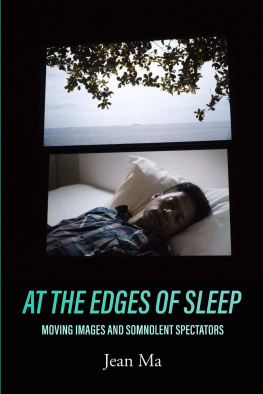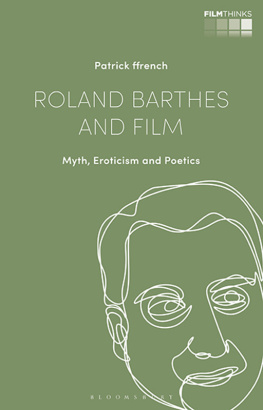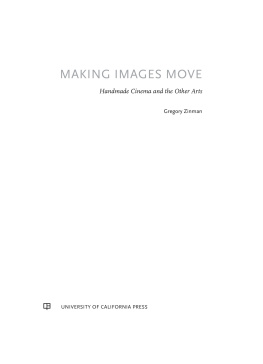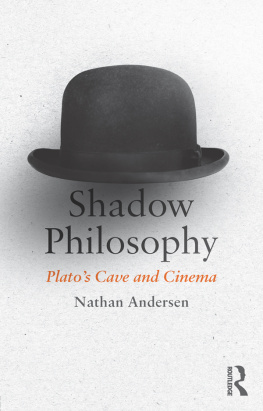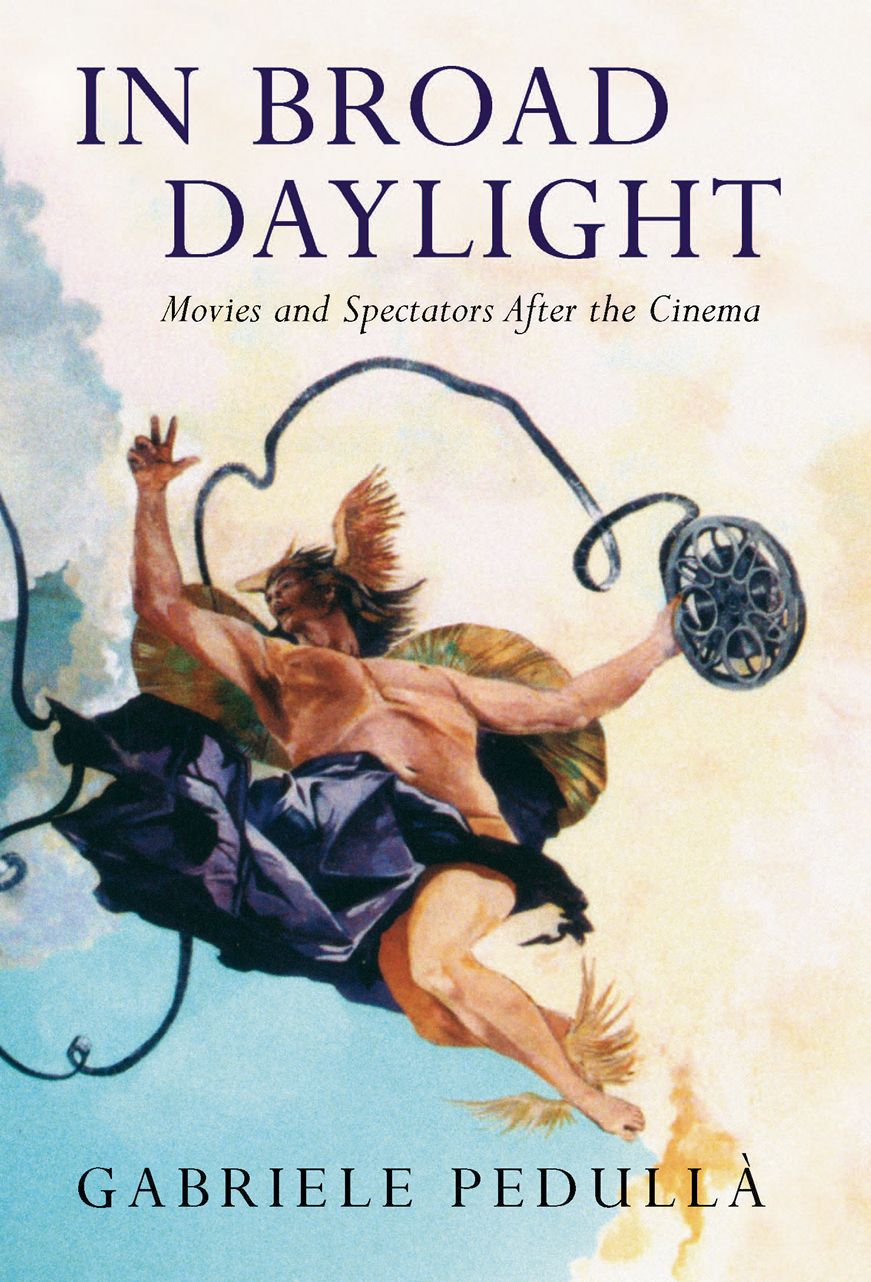
IN BROAD DAYLIGHT
Movies and Spectators after the Cinema
GABRIELE PEDULL
Translated by Patricia Gaborik

London New York
This English-language edition first published by Verso 2012
Verso 2012
Translation Patricia Gaborik 2012
First published as In piena luce. I nuovi spettatori e il sistema delle arti
Bompiani 2008
All rights reserved
The moral rights of the author have been asserted
1 3 5 7 9 10 8 6 4 2
Verso
UK: 6 Meard Street, London W1F 0EG
US: 20 Jay Street, Suite 1010, Brooklyn, NY 11201
www.versobooks.com
Verso is the imprint of New Left Books
Epub ISBN: 978-1-84467-919-5
British Library Cataloguing in Publication Data
A catalogue record for this book is available from the British Library
Library of Congress Cataloging-in-Publication Data
Pedull, Gabriele.
[In piena luce. English]
In broad daylight : movies and spectators after the cinema / Gabriele Pedull ;
translated by Patricia Gaborik.
p. cm.
Includes bibliographical references.
ISBN 978-1-84467-853-2
1. Motion picture audiences--History. 2. Motion picture theaters--History. I. Title.
PN1995.9.A8P4813 2012
302.2343--dc23
Tommaso Russo Cardona
in memoriam
Contents
Some may have loved the movie theatre more than the movie and were right to cry betrayal or suffer nostalgia. But othersmyself includedpreferred the film to the movie theatre. While the first probably loved the Saturday night ritual, the second preferred to invent a whole new series of personal liturgies in the anonymous darkness of a never-ending show. While the first were bound to the theatre and its rituals, the second already had a foot in the flow of the moving images. While the first would never be able to console themselves over their lost objectlets say Casablanca or Les enfants du paradis the second were ready to follow theirs to the ends of the earth and even far from the earth, all the way to the television.
Serge Daney, Le salaire du zappeur
One mustnt regret.
Ren Barjavel, Cinma total
Introduction
One might think that the evolution of the cinema is an artistic evolution, that cinema evolves because artists demand change. Instead I believe that such evolution is dictated by the progress of technology. Technology, the sensitivity of film, provokes changes that are much more important than artistic volition.
Andrzej Wajda
Like the world, and like cinema itself in the course of the last century, the spectator has changed.
Jean-Louis Comolli, Suspension du spectacle
The age of cinema, it is commonly claimed, is now drawing to a close. Day after day signs of a profound change in our relationship with moving images proliferate. The winnowing of box office receipts, the shrinking size of the audience, the decreasing time lag between a films theatrical release and its commercialization on video, televisions growing cultural prestige: these indicationsat once social, economic, and aestheticonly make the prophecy all the more credible. If cinema for decades represented the standard and even optimal filmic experience, the touchstone for all other forms of viewing, this formerly undisputed and indisputable centrality is today contested at its very core.
Perhaps, quite simply, a center no longer exists. In recent years the success of new means of image-reproduction has rendered the equation of cinema (the art of the film) with cinema (the place where films are shown) ever more fallacious. This ambiguity emerges with greater ease in languages such as Italian, French, Spanish, Portuguese, and German, which do not distinguish between the two through the use of different terms, as American English does by referring to the place as the movie theatre or picture house . Bit by bit, we have become indifferent to whether we see a film on widescreen with Dolby Surround, on an eighteen- or forty-two-inch TV, on a laptop, or on our mobile phones. And the new generation will not even feel deprived for never having seen the work of their beloved directors and divas on the big screen.
The transformation of technology and viewing habits has rendered instantly obsolete the questions that engaged intellectuals and cinephiles for decades. Who really wonders any longer whether the movie on TV last night was exactly the same as it was two years ago at the Rex or the Flora? The movie theatres decline and cinematic memorys defection from film to video have forever delegitimized queries of that sort. From a technical point of view, the differences are not negligible, but they are not absolute either. It is true, for instance, that on television, films run at a rate of twenty-six frames per second in Europe and thirty in the United States instead of the filmic twenty-four, and thus are slightly shortened; it is also true that the small screens format reframes the images, sacrificing their edges. But the list of grievances could go on. The TV image is much less defined, and only thanks to the small screen size does it not appear unpleasantly grainy: in the American standard, video has a total of approximately 350,000 pixels per frame, whereas a 35mm negative instead has the equivalent of about 7 million pixelsa net ratio of 1:20. The same goes for color. While television is capable of producing a maximum contrast (the relationship between the images darkest and lightest parts) of 30:1, film can obtain a contrast factor of 120:1four times as high. As a result, when a film is transferred to video, its colors become more luminous and intense, and the density and gradations of its blacks are immediately lost. The subtlest shadings consequently disappear.
As Francesco Savio, one of the masters of Italian film criticism, wrote, their dynamic qualities and tonal contrasts impoverished, movies on video are like gauze dipped in milk, whereas, projected, they reach the screen uncorrupted, on the straight and flexible rays of their own light. It would be easy to compile an anthology of protests against the degradation films suffer on the small screen; such a volume would unite a large number of the last centurys great directors, from John Ford (Your name is on it, but it isnt the thing you did) to David Cronenberg (The versions of The Dead Zone and The Fly that you find on video carry my name, and they are the films that I made, but I hate the way they look on tape. Too bright). Generations of cinephilesthose who always specify that, alas, they saw this or that film only on TVhave insisted on a radical difference between the two media. But today such attitudes seem, at the very least, outmoded. The technological gap no longer seems reason enough to divide into pieces a world of moving images that is already perceived as a whole in everyday life. The purism of the big screens champions and their almost religious cult of the movie theatre seem to have been vanquished by the common sense of the man on the street, who has never wondered whether La Dolce Vita on TV might be truly, deeply different from La Dolce Vita at the movies. Or perhaps it is the victory of the empiricism of Hollywoods tycoons, who from the start essentially saw the upstart box as a tool for recycling and converting older filmspotentially the vastest distribution system of all timeand were only divided on the strategies of commercial exploitation. That it was these same people who tried to counteract the fall in ticket sales by adding something new to the big screen (color, panoramic format, 3-D, and stereo sound), as if they were reiterating the superiority of the movie theatre, is maybe the best confirmation that the average spectator was already little inclined to distinguish between the two viewing experiences.
Next page


